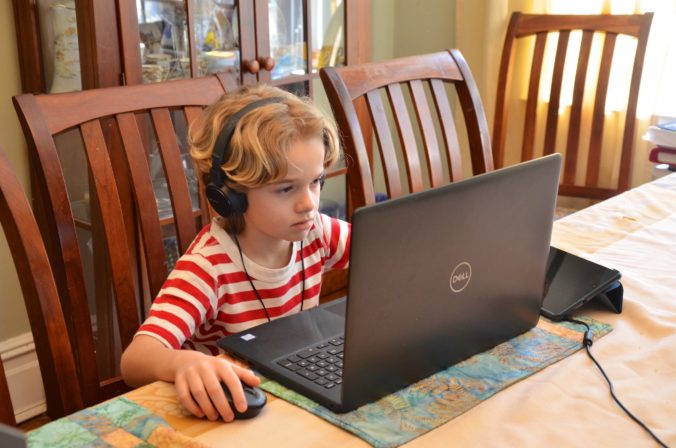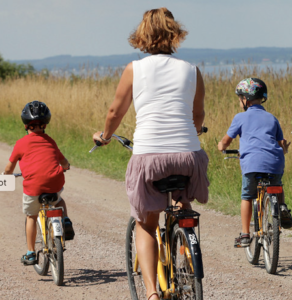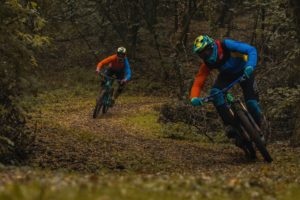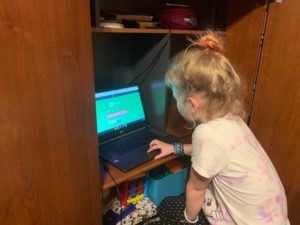Our focus for our project was centred around three outcomes: building community between educators and elementary school learners, building community between learners and their peers, and supporting parents and caregivers as their involvement in schooling is forced to increase.
When asked to share evidence for why we gathered resources for building classroom community, our first response was, “Why? Isn’t it common knowledge?” We would be hard-pressed to find an educator who does not agree that building an inclusive classroom community is a top priority for successfully teaching children. After all, many educators are familiar with Lev Vygotsky’s theories about social interaction and cognitive development, as “he believed strongly that community plays a central role in the process of ‘making meaning’” (McLeod, 2018, para. 2).
Classrooms are places of constant interaction and it is these interactions that educators depend on to get to know their learners. Many such interactions start with the educator sharing information about themselves, ideally setting the tone for an inclusive space. Hoskins et al. (2016) explored discourse as a means to build classroom community. They contest that classroom interactions should take place on “a level horizontal plane with speakers, namely the teacher and students, conversing as equal contributors in a cohesive dialogue, independent in their thinking and contributions” (Hoskins et al. (2016), p. 295). An article by Zhang et al. (2017) cited Cutler’s 1995 publication that also discussed the idea of discourse in the classroom, stating, “the more one discloses personal information, the more others will reciprocate, and the more individuals know about each other, the more likely they are to establish trust, seek support, and thus find satisfaction” (p. 335). It is the sharing of this information that can make an educator seem more likable and relatable than someone who is standing at the front of the room demanding attention.
Song et al., (2016) took this notion of disclosing personal information further by exploring relationships in distance learning situations. They conducted a study that found that many educators in distance-learning situations did not spend as much time engaging in interpersonal communication practices as face-to-face teachers do. They concluded that it is critically important for online educators to disclose personal information about themselves to online learners, more so than in face-to-face learning environments. They added that “(o)nly when teacher SD (self-disclosure) helps build positive teacher-student relationships, can it positively influence learning outcomes” (p. 441). In other words, if educators disclose personal information that learners value, learners are going to respond to the relationship more positively, possibly with admiration or trust.
In our experience, once trust is established, learners begin to open up and become comfortable in the classroom setting, asking questions, sharing ideas, and seeking approval with both teachers and peers during instructional and social times. “Students of varied ages, experiences, and backgrounds who perceive their teachers to be supportive of their needs and interests are more engaged, more motivated, more self-directed, and more socially connected at school than their peers” (Saul, 2015). Furthermore, when “students have opportunities to talk and listen to each other, provide emotional support, share learning experiences, and develop respect, they are more likely to feel that they belong and are understood and cared for by their peers (Furrer et al., (p. 106). The result is a culture of inclusion and respect.
It is important to make sure this culture of inclusion and respect carries over into the educators’ relationships with parents and caregivers. While caregivers of home-schooled children volunteered to become deeply involved in their children’s education, the COVID-19 crisis has forced all caregivers to become involved whether they like it or not. On the bright side, Barnard (2004) found that when parents become involved in their child’s schooling at an early age, the benefit can last until at least the age of twenty. As well, Huber and Helm (2020) quoted other studies that have proven “a caring educational style, in which parents, peers and teachers support students’ basic psychological needs for autonomy, competence experience and social integration, is positively related to volitional competence, including persistence and perseverance” (p. 249). The downside, according to Barnard (2004), is that many educators are not certain how to engage parents in a way that does not feel patronizing. Parents need to be welcomed into the process of schooling, not just the fundraising. COVID-19 has dragged parents and caregivers into a new level of school involvement and they will need educators’ support to be successful.
Creating a classroom culture filled with trust and reciprocating discourse, along with a variety of activities and learning engagements, encourages learners no matter where they are to interact with their educators and peers. Classroom culture has never been more important than during this time of uncertainty due to the COVID-19 pandemic. During online learning, it will be these shared experiences that will enhance the educator-learner connection and lead to a more positive learning experience for all involved.
References
Barnard, W. M. (2004). Parent involvement in elementary school and educational attainment. Children and Youth Services Review, 26(1), 39–62. https://doi.org/10.1016/j.childyouth.2003.11.002
Furrer, C. J., Skinner, E. A., & Pitzer, J. R. (2014). The influence of teacher and peer relationships on students’ classroom engagement and everyday motivational resilience. National Study for the Society of Education, 113(1), 101-123. https://www.researchgate.net/publication/248702173_The_Influence_of_Teacher_and_Peer_Relationships_on_Students’_Classroom_Engagement_and_Everyday_Resilience
Huber, S. G., & Helm, C. (2020). COVID-19 and schooling: Evaluation, assessment and accountability in times of crises—reacting quickly to explore key issues for policy, practice and research with the school barometer. Educational Assessment, Evaluation and Accountability, 32(2), 237–270. https://doi.org/10.1007/s11092-020-09322-y
Lloyd, M. H., Kolodziej, N. J., & Brashears, K. M. (2016). Classroom discourse: An essential component in building a classroom community. School Community Journal, 26(2), 291-304. https://files.eric.ed.gov/fulltext/EJ1124019.pdf
McLeod, S. (2018). Lev Vygotsky’s Sociocultural Theory. Simply Psychology. https://www.simplypsychology.org/vygotsky.html
Saul, R. (2015, November 24). What is the influence of teacher-student relationships on learning? EdCan Network. https://www.edcan.ca/articles/what-is-the-influence-of-teacher-student-relationships-on-learning/
Song, H., Kim, J., & Luo, W. (2016). Teacher–student relationship in online classes: A role of teacher self-disclosure. Computers in Human Behavior, 54, 436–443. https://doi.org/10.1016/j.chb.2015.07.037
Zhang, C., Du, J., Sun, L., & Ding, Y. (2018). Extending face-to-face interactions: Understanding and developing an online teacher and family community. Early Childhood Education Journal, 46(3), 331–341. https://doi.org/10.1007/s10643-017-0864-8

 We began this project by searching the internet for articles, blog posts, and Twitter feeds that addressed the concerns of building online and blended communities, and supporting parents. Below are some of the search engine descriptions we used:
We began this project by searching the internet for articles, blog posts, and Twitter feeds that addressed the concerns of building online and blended communities, and supporting parents. Below are some of the search engine descriptions we used:


Recent Comments